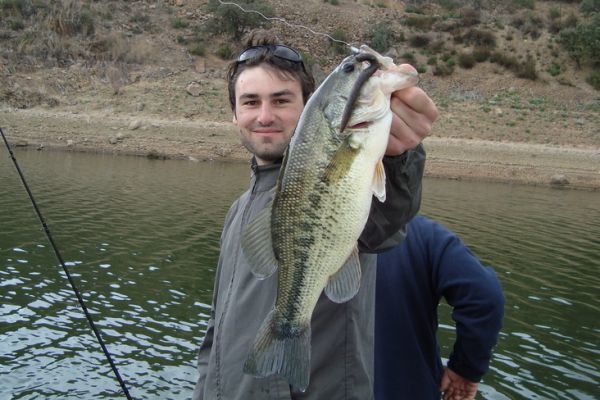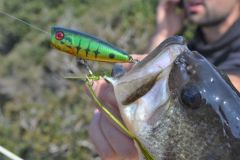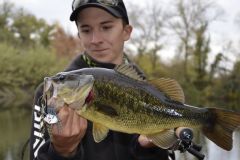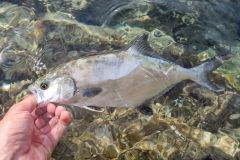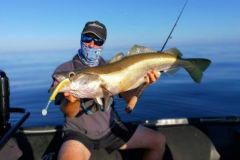Fishing black bass with worms
Worm lures are among the most popular lures for catching the sport fish par excellence: black bass. Worms are long, thin lures that resemble large worms, hence their name.
This is a circular-section, ringed lure with a small, smooth, unringed surface representing the clitelium characteristic of earthworms.
The tail can be pointed, flat or sickle-shaped. Although the primary form is the worm, the worm can resemble a leech, a fish or an eel. This is one of its strengths: it doesn't just evoke a worm (which, between you and me, isn't something you come across every day in the water), it simply evokes easy prey.
These simple-shaped lures are highly effective when used in the right way. Here are 5 ways to use worms that every self-respecting black-bass angler should know.
1/Texas rig
Texan mounts cover an enormous range of variations. From split shot, to heavy texas, to punching. What all these variants have in common is the worm mounted on a Texan hook.
The famous single hook bent at the head, which allows the hook point to be hidden in the soft lure material, protecting it from obstacles and snags.
The Texan rig I'm about to introduce is the basic rig. It consists of a worm mounted on a Texan hook, preceded by a ball-shaped weight.

It is possible to place a rubber ball between the ballast and the hook (to protect the hook's connection knot) and a sinker stopper (to prevent the ball from slipping on the line), although this is optional. The set is very popular as it allows you to fish in the heart of obstacles, where black-bass take refuge.
This rig is effective all year round, even in winter, when black bass stay close to grass beds that absorb the sun's rays, warming the water by one or two degrees. The great advantage of the worm with this rig is that it is highly mobile and attractive even with little animation.
What's more, its tapered shape with no vibratory appendage makes it ideal for threading its way through obstacles and aquatic vegetation.
To take advantage of this classic set-up, it's best to use a casting set. If you use this "American-style" rig, with a heavy ball to penetrate the most difficult obstacles, use an MH to H rod (such as the Ashura Cover Method B210MH from Illex), with a high-ratio reel spooled in 20-lb braid or 35/100 fluorocarbon, to get the black bass out of the obstacles... On the lure side, the Yammy 4.5'' or the famous Senko are ideal for this exercise, ultra-dense worms, perfect for this type of rig...
2/Texas weight less
Another setup that's also a Texan setup, but I'm treating it separately because it seems so different... I'm talking about the weightless Texas mount. This is one of the mounts I know best.
It was with the latter, in particular, that I really started black-bass fishing on my Gironde spots. Fishing without ballast has many advantages. The lure's swimming action is ultra-natural because it's not restricted by a weight.
The lure is more gliding and the movements are more fluid. There's no resistance to prevent the black bass from sucking in the lure. Another undeniable advantage is that a texan weightless worm is very easy to skipper. In other words, it ricochets off the surface.
Even beginners will find it easy to send their lure under branches overhanging the water, through foliage or under pontoons.
The weightless rig allows you to fish both in open water and on the surface. I particularly like to use this rig in the summer for buzzing fishing over weedbeds in the evening. Black bass attacks are often demonic!
It's a rig I use for both spinning and casting, depending on the size and density of the worms, which are themselves dictated by the configuration of the fished spots. For a beginner wanting to try skipping, I still recommend a spinning rig with MH to H power.
3/Wacky & neko rig
This is one of my favourite rigs for sight-fishing black bass. This rig will allow you to present a lure that really imitates a worm. The main feature of this rig is the position of the hook. Either the single hook or the lead head is inserted through the middle of the lure. In the case of the Wacky, the lure is horizontal and oscillates as it descends.
Small twitches with the rod tip will make the lure wiggle, imitating to perfection a wriggling earthworm. Among the many effective lures for this technique, I cite Illex's excellent Flick shake, which is the benchmark, surely one of the best lures for wacky rigs and one of the most realistic. It is specially designed for this type of fishing and is moulded in an "S" shape, rather than straight, to accentuate the oscillatory movement of its ends.
At first glance, the neko rig may seem similar to the wacky, but I use it for different situations. The technical difference lies in the use of a metal insert (lead or tungsten) at one end of the worm. The lure will no longer sink horizontally, but vertically. It will also sink faster as the worm offers less resistance in the water.
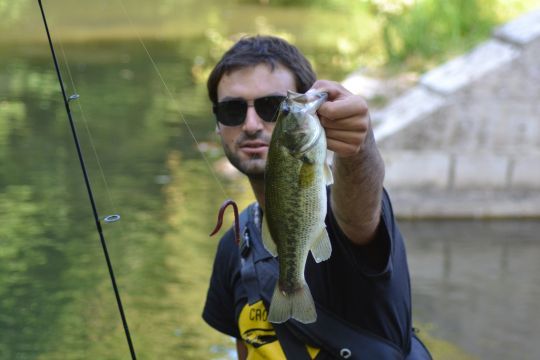
I use this rig less when sight fishing, but more for prospecting on marked spots: isolated branches, clumps of weeds, wooden structures...
If you're lucky enough to see a nice black-bass interested in your rig, be patient. Black bass, especially beautiful ones, will often only take your lure when it's on the bottom, motionless in do-nothing mode. The black bass then sucks the lure in and the bite is usually very discreet.
I don't hesitate to use UL to ML rods for spinning. They're more sensitive and the progressive action of their tip makes it easier to take the lure in the mouth and twitch. What's more, the technique often requires the use of a fine, discreet fluorocarbon (24/100 down to 18/100!) and a light rod will be better able to dampen head strikes and accelerations. As far as I'm concerned, the Ashura Pepper S210ML Akoya Pearl is my favorite when I use this type of set-up.
4/Jig head
By far my favorite method for presenting a worm to black bass. It's a very versatile rig and yet, again, not widely used.
This all-round package lets you do just about anything with a worm. Fast prospecting, slow fishing, deep fishing, open water... I'm particularly fond of swimming animations or alternating between resting on the bottom and swimming in a twirling motion, like a "volée" for sea bass.
I almost always use a jig head with a Texas hook, notably the Texas jig head aero point from Illex in 1.8 g or 3.5 g. Those who know me know that I've been using these hooks for a long time.
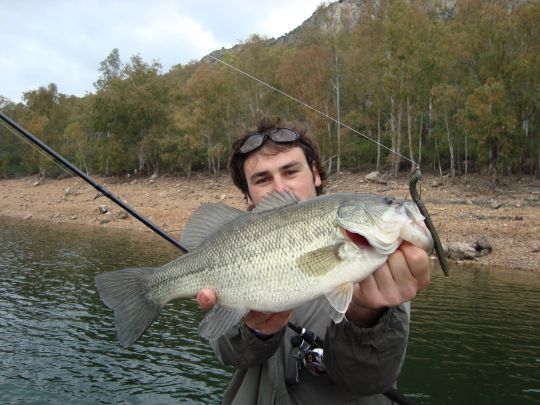
Even though they're small, I have very few misfires on the hook. What's more, the hook's "elasticity" ensures a near-zero stall rate.
5/Shaky rig
The use of this mount remains anedotic in France. However, it is very useful in spots overcrowded with rocks and boulders. Indeed, while it doesn't work as well in grass and vegetation, it's much better in mineral relief.
It is best suited to bottom scraping and hollow fishing. It's also ideal for fishing vertical structures such as bridge piers or dock or cliff ledges.
The Parituclière lead head gives the worm plenty of freedom of movement and its upright, non-reclining presentation on the bottom makes it very fishable even when placed on the substrate. The worm is hooked into the head by means of a spring or pin, then hooked again with the tip of the hook flush with the lure material, in the same way as a Texas hook.
A worm presented close to the bottom, with little animation, will be perfect for tempting a listless black bass.
Would you like a worm?
The worm, a classic among classics, deserves your attention, so versatile is this lure that it supports a wide variety of set-ups.
Each set-up allows you to get the best out of many situations. I like to say that there's a worm assembly for every situation... And they're often a good solution in any season.

 /
/ 